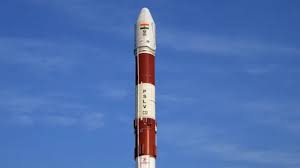
India’s First Privately Manufactured PSLV: A Leap Towards Space Self-Reliance
India’s First Privately Manufactured PSLV: A Leap Towards Space Self-Reliance
India is poised to achieve a historic milestone in space technology with the upcoming launch of its first privately manufactured Polar Satellite Launch Vehicle (PSLV), slated for 2025–2026. This landmark mission is being executed by a consortium of Hindustan Aeronautics Limited (HAL) and Larsen & Toubro (L&T), working under the technical supervision of the Indian Space Research Organisation (ISRO). The mission will carry the Technology Demonstration Satellite-1 (TDS-1), which hosts 35 indigenous experiments, including pioneering electric propulsion systems, quantum payloads, and an atomic clock. This collaboration marks a significant step toward fostering a private space ecosystem and demonstrates India’s commitment to technological self-reliance in the space sector.
Context and Objectives of Privatisation
The decision to allow private companies to manufacture the PSLV represents a strategic pivot in India’s space policy, emphasizing privatization and industrial participation. By transferring routine manufacturing responsibilities to private players, ISRO can focus its expertise and resources on high-complexity missions, such as the Gaganyaan crewed spaceflight, Chandrayaan lunar missions, and the Reusable Launch Vehicle program. Initially, HAL and L&T are expected to share production responsibilities equally, but the roadmap envisions private sector involvement expanding to 80–85 percent of PSLV manufacturing in the near future. This framework ensures that private enterprises gain significant operational autonomy while maintaining ISRO’s stringent quality and safety standards, creating a controlled yet scalable model for private participation in critical space infrastructure.
PSLV: India’s Reliable Space Workhorse
The PSLV has long been celebrated as India’s most versatile and dependable launch vehicle. Since its first successful launch in 1993, the vehicle has completed over 50 missions, achieving global recognition for both technological sophistication and reliability. Its modular design, alternating solid and liquid propulsion stages, and multiple variants, including PSLV-CA (core alone) and PSLV-XL (with extended boosters), which allow it to deliver payloads ranging from small satellites to interplanetary missions. Notable successes include PSLV-C37, which deployed 104 satellites in a single flight, and PSLV-C25, which carried India’s first Mars mission, Mangalyaan. These achievements underscore PSLV’s adaptability, enabling India to maintain a credible and competitive presence in international satellite launches.
Government Support and Regulatory Framework
The Indian government has developed a comprehensive support structure to promote private sector participation in space technology. New Space India Limited (NSIL) acts as the commercial arm, facilitating private manufacturing, launch execution, and market integration. Meanwhile, IN-SPACe (Indian National Space Promotion and Authorization Center) oversees regulatory compliance, providing approvals and acting as a liaison between ISRO and private companies. Additionally, policy reforms and relaxed foreign direct investment (FDI) norms have created an environment conducive to private investment and international collaboration. Together, these measures ensure a regulated, transparent, and investor-friendly ecosystem, allowing private enterprises to thrive without compromising national security or mission integrity.
Strategic Vision and National Ambitions
Privatization of PSLV production aligns with India’s broader strategic objectives to expand its share in the global space market, currently estimated at around 2 percent. By 2040, India envisions becoming a major international launch service provider, on par with established powers like the USA, Russia, and China. Encouraging private sector participation not only enhances technological self-reliance but also strengthens national security by reducing dependency on external suppliers. The initiative also underscores India’s intent to foster indigenous innovation, enabling cost-effective mission planning and operational flexibility while supporting the country’s long-term economic, scientific, and strategic goals.
Emerging Private Space Ecosystem
India’s private space sector is evolving rapidly, now hosting over 200 startups engaged in satellite technology, launch systems, and space-based research. Companies such as Skyroot Aerospace exemplify the growing competence of private players, preparing for commercial launches as early as 2026. Collaboration with ISRO provides these startups with critical access to testing infrastructure, technical guidance, and market linkages, encouraging innovation and entrepreneurship. This synergy between government and private industry is expected to propel India into a competitive position globally, while also nurturing homegrown talent and strengthening the domestic aerospace manufacturing ecosystem.
Technological and Economic Impact
The private manufacturing of PSLV heralds a new era for technology demonstration and industrial growth. The TDS-1 satellite will test a 300 milli-Newton (mN) electric propulsion thruster, developed indigenously by ISRO’s Liquid Propulsion Systems Centre, which is expected to improve mission efficiency and reduce costs. Other payloads, such as atomic clocks, are crucial for high-precision satellite navigation and communication, while quantum payloads may enable advances in secure communication technologies. Economically, the initiative is poised to stimulate aerospace manufacturing, create green jobs, and expand India’s footprint in the global launch market. By combining technical innovation with industrial growth, the program strengthens both India’s domestic capabilities and international competitiveness.
The Road Ahead: Challenges and Prospects
Despite its promise, the PSLV privatization initiative faces several challenges. Ensuring quality and timeline adherence requires careful coordination and capacity-building between ISRO and private manufacturers. Integrating new technologies into operational missions demands rigorous testing and risk management. Scaling private participation also depends on continued policy support, infrastructure development, and investment incentives. Nevertheless, if successfully implemented, the PSLV program could serve as a blueprint for further commercialization of India’s space sector, encompassing satellite production, mission execution, and advanced exploration technologies.
Conclusion
The launch of India’s first privately manufactured PSLV represents more than a technological accomplishment, it signals a new era in India’s space strategy, where government oversight and private innovation converge. This initiative strengthens technological self-reliance, fosters economic growth, and enhances strategic security. By enabling private enterprises to manufacture and operate critical space infrastructure under ISRO supervision, India is laying the groundwork for a dynamic and resilient space ecosystem. The success of this mission will not only consolidate India’s position in the global space arena but also inspire further collaborations, innovation, and private sector engagement, marking a transformative step toward achieving India’s long-term space exploration and industrial ambitions.
f